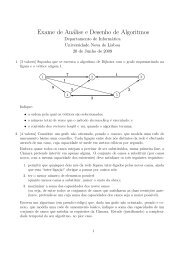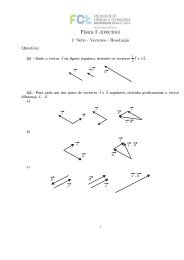Security Articles from Wikipedia
Security Articles from Wikipedia
Security Articles from Wikipedia
You also want an ePaper? Increase the reach of your titles
YUMPU automatically turns print PDFs into web optimized ePapers that Google loves.
Cryptographic hash function 31<br />
Applications<br />
Verifying the integrity of files or messages<br />
An important application of secure hashes is verification of message integrity. Determining whether any changes<br />
have been made to a message (or a file), for example, can be accomplished by comparing message digests calculated<br />
before, and after, transmission (or any other event).<br />
For this reason, most digital signature algorithms only confirm the authenticity of a hashed digest of the message to<br />
be "signed." Verifying the authenticity of a hashed digest of the message is considered proof that the message itself<br />
is authentic.<br />
A related application is password verification. Passwords are usually not stored in cleartext, for obvious reasons, but<br />
instead in digest form. To authenticate a user, the password presented by the user is hashed and compared with the<br />
stored hash.<br />
File or data identifier<br />
A message digest can also serve as a means of reliably identifying a file; several source code management systems,<br />
including Git, Mercurial and Monotone, use the sha1sum of various types of content (file content, directory trees,<br />
ancestry information, etc.) to uniquely identify them. Hashes are used to identify files on peer-to-peer filesharing<br />
networks. For example, in an ed2k link, an MD4-variant hash is combined with the file size, providing sufficient<br />
information for locating file sources, downloading the file and verifying its contents. Magnet links are another<br />
example. Such file hashes are often the top hash of a hash list or a hash tree which allows for additional benefits.<br />
One of the main applications of a hash function is to allow the fast look-up of a data in a hash table. Being hash<br />
functions of a particular kind, cryptographic hash functions lend themselves well to this application too.<br />
However, compared with standard hash functions, cryptographic hash functions tend to be much more expensive<br />
computationally. For this reason, they tend to be used in contexts where it is necessary for users to protect<br />
themselves against the possibility of forgery (the creation of data with the same digest as the expected data) by<br />
potentially malicious participants.<br />
Pseudorandom generation and key derivation<br />
Hash functions can also be used in the generation of pseudorandom bits, or to derive new keys or passwords <strong>from</strong> a<br />
single, secure key or password.<br />
Hash functions based on block ciphers<br />
There are several methods to use a block cipher to build a cryptographic hash function, specifically a one-way<br />
compression function.<br />
The methods resemble the block cipher modes of operation usually used for encryption. All well-known hash<br />
functions, including MD4, MD5, SHA-1 and SHA-2 are built <strong>from</strong> block-cipher-like components designed for the<br />
purpose, with feedback to ensure that the resulting function is not bijective. SHA-3 finalists include functions with<br />
block-cipher-like components (e.g., Skein, BLAKE) and functions based on other designs (e.g., JH, Keccak).<br />
A standard block cipher such as AES can be used in place of these custom block ciphers; that might be useful when<br />
an embedded system needs to implement both encryption and hashing with minimal code size or hardware area.<br />
However, that approach can have costs in efficiency and security. The ciphers in hash functions are built for hashing:<br />
they use large keys and blocks, can efficiently change keys every block, and have been designed and vetted for<br />
resistance to related-key attacks. General-purpose ciphers tend to have different design goals. In particular, AES has<br />
key and block sizes that make it nontrivial to use to generate long hash values; AES encryption becomes less<br />
efficient when the key changes each block; and related-key attacks make it potentially less secure for use in a hash









